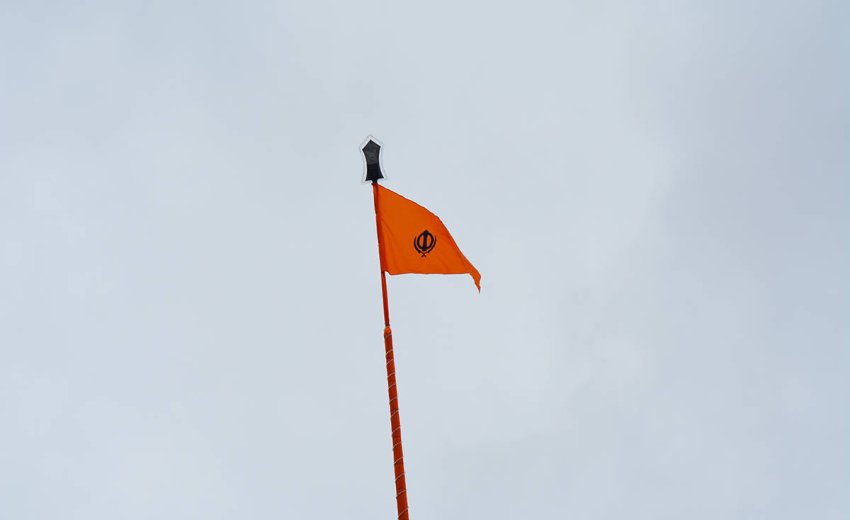In 2021, the farmers' tractor march took an unexpected turn when a group of protesters entered India’s Red Fort and raised the religious flag 'Nishan Sahib' on the monument, generating a significant uproar. Many farmers' leaders and unions have distanced themselves from the course of events that occurred on India's 72nd Republic Day. Deep Sidhu, an actor, was accused of encouraging the route deviation as well as raising the flag above the Mughal monument, which prompted criticism from legislators of all parties.
All about the Nishan Sahib
The Nishan Sahib is a triangular Sikh flag with a tassel at its end that is made of cotton or silk fabric. The title Nishan Sahib means "exalted ensign," and the flag furls outside Gurdwaras on a tall flagpole. The flagpole, which is draped in fabric, is topped with a Khanda (In the past an Astbuj, nagani barsha or a teer would be placed on top). The flag's symbol is known as Khanda, and it displays a double-edged sword called a khanda (Miri te Piri) in the centre, a circular chakkar, and two single-edged swords, or kirpans, flanked by two single-edged swords, or kirpans. Almost all Sikh fighters wore it in the seventeenth century, and Nihangs still do today.
The Nishan Sahib dates back to 1606 when the Sixth Guru Har Gobind unfurled the first Sikh flag over Amritsar's Akal Takhat seat of authority. Sikhs termed the flag Akal Dhuja (everlasting banner) or Satguru Nishan (genuine guru's insignia) at the time. It is a traditional symbol of the Khalsa Panth (corps of initiated Sikhs), can be seen from afar, indicating the presence of Khalsa in the area. Every Baisakhi (harvest festival, mid-April in the Gregorian calendar and Vaisakh month in the Nanakshahi calendar), it is removed and replaced with a new flag, and the flagpole is renovated.
History of Nishan Sahib
During Guru Hargobind's reign, the Nishan Sahib was dyed in a shade of yellow known as Basanti to represent the Sikhs' spirituality and martial spirit. After the founding of Khalsa Guru Gobind Singh introduced the Navy Blue (called Surmayee) flag , which is still the colour of the Nihang flags. The initial Sikh flags were plain, but Guru Gobind Singh added the emblems. The first Sikh emblem was the three weapons, the Kattar (dagger), Dhal (shield), and Kirpan (sabre). Later, the Sikh misls and the Empire adopted these symbols.
When Gulab Singh requested that the Nishan Sahib be altered to saffron or deep orange, Maharaja Ranjit Singh declined. But, when he converted the army from traditional Akalis to French-style soldiers, he created separate flags to respect Hindu and Muslim ideals. Subsequently, the Muslim regiments' battle standards were the Lion and the Sun, while the Hindu regiments' battle standards were various gods and goddesses.
The Sikh Nishan Sahib of today
During British rule, it was changed from Basanti and Surmayee to Kesari. During the Singh Sabha Movement, Sikhs attempted to restore Sikhism to its original grandeur, hence it became the Dal Khalsa Banner at first, but gradually transformed into the current Nishan Sahib with the Khanda Symbol.
This flag is treated with great reverence, and it is washed with milk and water every year in April during the Vaisakhi celebration. Once the saffron tint has faded, the Nishan Sahib is changed.According to the Sikh Rehat Maryada the Nishan Sahib should be xanthic (Basanti in Punjabi) or greyish blue (present-day Naval blue and Surmaaee in Punjabi) in colour.
